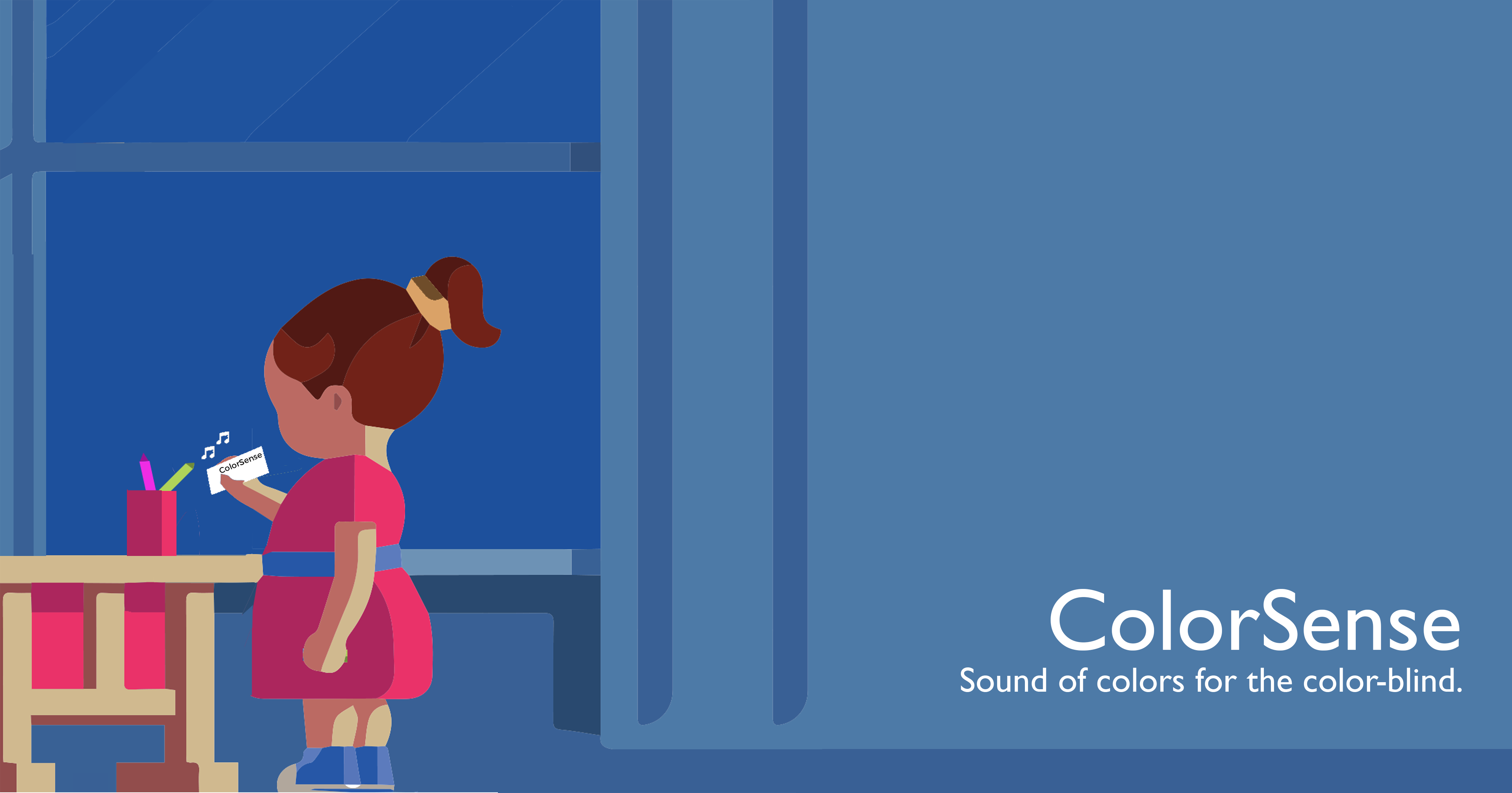ColorSense
Summary
Yellow is the color of daffodils, leaves are green, the ocean and the sky are blue. Colors can make you reminisce about the warm sweater your grandma once sewed for you, or make you delve into a memory of sadness which you had forgotten. Colors symbolise our way of life. But, how many times have we thought of how a person who is visually impaired (VI) feel about colors?
Introducing ColorSense, a camera-enabled pocket-device for the color-blind and visually impaired that translates a color into a sound and tactile feedback, effectively making colors observable to them. Colorsense can be placed in a kindergarten to teach colors to VI children or used by a color-blind person for identifying the colors of the path they use daily. It is a small step towards bringing ‘everyday magic’ and a bit of musical sunshine into millions of lives who have known colors merely as words.
Scope
4 Weeks (January 2017)
Role
Concept Development, User Experience Design, Video.
Categories
Accessibility: Designing for Visual Impairment.
ColorSense won the Global First Place in the
'Intel IxDA Student Design Challenge' at the Interaction17 conference
held in New York City on 8th February 2017.
The event was organized by the Interaction Design Association (IxDA).
The idea of ColorSense spawned after my initial efforts to help color-blind and visually impaired students in chemistry lab through 'Titration Colorcam'. Motivated to help a color-blind friend of mine, I saw the design of ColorSense to aid individuals at instances where color has an added definition given by nature or society. For example traffic lights, ripe and unripe bananas. Each color with its definition is mapped to a sound or music. The user comprehends the sound feedback and understands the meaning of the color in the moment.
After being selected as one of the only six finalists from around the world for the Intel IxDA Student Design Challenge. I was invited to New York for the charrette-style competition lasting 3 days. During the conference, I was tasked to research, iterate, and prototype on my initial idea. The idea gained ground due to some wonderful feedback I received from Todd Harple,
MJ Broadbent, Dave Malouf, Jon Kolko, Brendan Dawes, Chelsea Hostetter, Ana Domb, and Ahmed Riaz. Most importantly, at the conference venue, I got the opportunity to interview color-blind designers, and their thoughts as prospective users molded the concept.
In the end, I had to pitch my design concept to over 800 design leaders and professionals. As so it happened, at the IxDA Awards 2017, I was declared the winner!
Intel IxDA Student Design Challenge 2017 - ColorSense from Balraj Rathod on Vimeo.
The research process challenged me to step into the shoes of color-blind individuals facing difficulties in their daily lives. The major problem I faced in designing the interaction was that color-blindness is not binary, but rather on a scale. It is highly varied. A color-blind individual can see colors as their own spectrum and it doesn't necessarily have to match the colors as seen by a normal-sighted person. Working up the problem, I had to narrow down the 'moments of frustration' where color-blind individuals face a decision of ambiguity. At those moments, I decided to design my interaction using ColorSense.
The initial prototype concept which I had pitched for the design challenge preliminary screening is down below.

